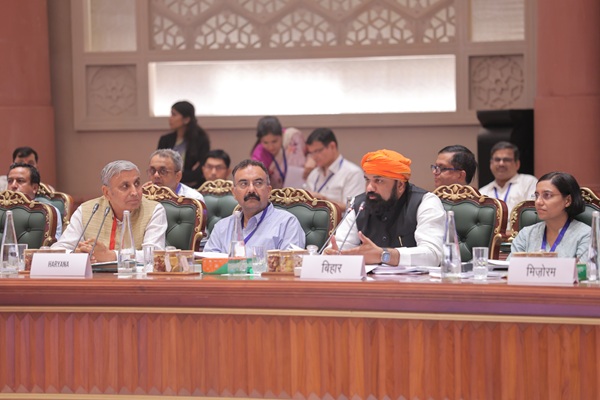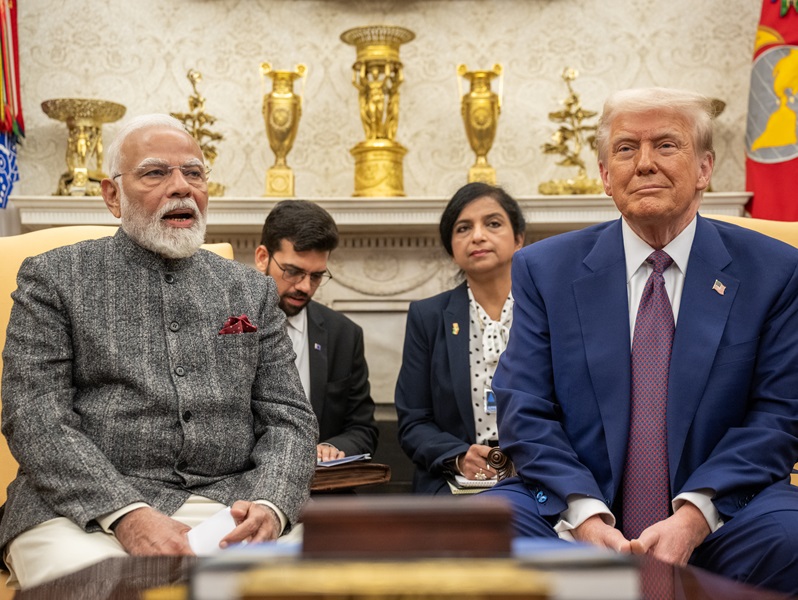.png)

Datametricx is a veteran journalist tallying the macro game, keeping score of the numbers that shape India’s economy and policy.
August 29, 2025 at 7:10 AM IST
When the idea of rationalising India’s Goods and Services Tax slabs resurfaced, alarms were raised about what this may mean for states. Their treasuries, already stretched, could ill afford a new revenue shock. At first glance, the numbers seem daunting. Moving most items from the 12% slab to 5% and from the 28% slab to 18% appears to hand out big tax breaks that would cut into state revenues. Yet a closer look shows the impact is far smaller than what is feared.
The finance ministry has proposed to the GST Council a reduction in the number of slabs from four — 5%, 12%, 18% and 28% — to two — 5% and 18% — along with a higher levy on select “sin” goods.
About 72% of revenues come from items taxed at 18% and 5%. That leaves roughly 28% of revenues exposed to change. If we take net GST collections of ₹18.07 trillion in 2024–25, then ₹13.01 trillion is unaffected. The exposed segment is worth about ₹3.64 trillion. Assuming half of this is lost in the shift, the revenue shortfall comes to about ₹1.82 trillion. By design, states will bear the larger share of the revenue loss as they receive about 71% of total GST collections annually — 50% as their direct share in GST collections and an additional 21% through tax devolution. The revenue loss for the states adds up to ₹1.29 trillion, or around 9% of their revenues from GST, including devolvement.
These figures are not trivial, but neither are they crippling. Much of the gap can be bridged through the existing compensation cess. Media reports suggest the GST Council will continue the current cess on sin goods such as tobacco, pan masala, cigarettes, luxury cars, online gaming, caffeinated beverages, and aerated drinks.
The cess, which is levied over and above the highest tax slab of 28%, brought in ₹1.49 trillion in 2024-25. If extended beyond March 2026, it could cover about 80% of the projected revenue loss, leaving an overall shortfall of about ₹334 billion, an amount that could be absorbed by the Centre and states without major difficulty.
Critics, of course, will question whether this optimism is misplaced.
The compensation cess was originally designed to protect state revenues in GST’s first five years but is now being used to repay loans raised during the COVID-19 pandemic to cover GST shortfalls. The finance ministry has hinted that the eventual end of the cess will provide fiscal space and flexibility to rationalise and align tax rates within the GST framework.
They may argue that the extension of the cess is politically uncertain, that the assumption of a 50% revenue loss in the affected slabs underplays possible demand or compliance shocks, and that the burden will not be evenly shared across states. Some could add that delays in compensation during the pandemic have eroded trust in the Centre’s assurances. Yet even when these concerns are factored in, the order of magnitude suggests adjustment rather than crisis.
Political noise is also bound to accompany any GST reform. States have long complained of delays in compensation payments, and the prospect of ceding further fiscal ground to the Centre will draw resistance. Yet the arithmetic leaves little doubt. With the ruling alliance already holding the balance of power in the GST Council, and with the numbers showing a limited hit, the likelihood of reform being blocked is low.
The more important question is what this means for fiscal management. For the Centre, rationalisation promises a simpler GST structure, lower compliance costs, and a tax base that is easier to administer. For states, the shift is not without discomfort, but the cushion provided by the compensation cess ensures that the transition does not translate into a budgetary crisis.
The political theatre will continue. Chief ministers will press for assurances, while finance ministers will argue for a bigger slice of the pie. Yet the real story is less dramatic. Rationalisation narrows distortions in the GST regime and strengthens the credibility of India’s tax system. It may pinch, but it does not hobble.
In the end, the reform is less about a sudden loss for states and more about preparing the ground for higher, more stable revenues in the years to come. By leaning on the cess as a bridge, the government has the room to press ahead with a long-delayed simplification. The fears of fiscal mayhem are overstated. What lies ahead is a manageable adjustment that leaves the GST system stronger.
The GST Council usually works through consensus. The Centre holds one-third of the council’s voting weight, while states collectively hold two-thirds. A proposal requires three-fourths of the votes to pass. With the ruling National Democratic Alliance controlling 21 of the 31 state votes, plus the Centre’s one-third share, the government has the numbers to push the reform through even if consensus breaks down.




